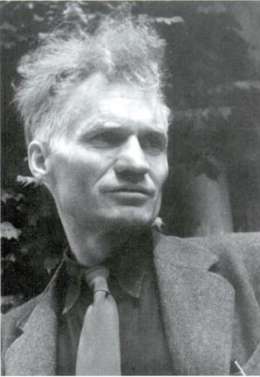
André-Charles Biéler, born in Lausanne, Switzerland, in 1896, was a man whose life and work left a profound mark on the Canadian art scene. His artistic journey, characterized by a deep connection to the landscapes and people of Quebec, combined with his relentless passion for promoting Canadian art, has secured his place in the annals of Canadian cultural history.
Early Life and Education
Biéler was born into an intellectually vibrant family; his father, Charles Biéler, was the Director of Collège Gaillard, and his mother, Blanche Biéler, was the daughter of the prominent historian J.H. Merle d'Aubigné. André's early exposure to art came from his uncle, Ernest Biéler, a noted Swiss artist, who introduced him to the basics of drawing. The Biéler family moved to Paris when André was young, where he continued to nurture his artistic talents.
In 1908, the Biéler family immigrated to Canada, settling in Montreal. André attended the Westmount Academy and the Institut Technique de Montreal, initially preparing for a career in architecture. However, the outbreak of World War I changed the course of his life. Biéler enlisted in the Princess Patricia's Light Infantry and served in France, where he was severely wounded and gassed. This experience significantly affected his health and led him to reconsider his future, ultimately deciding to pursue art as a full-time career.
Artistic Development and European Influence
After the war, Biéler's passion for art took him back to Europe. He studied at the Lycée Carnot in Paris and later at the Art Students' League in Woodstock, New York. His studies also took him to the École du Louvre and the Atelier Ranson, where he worked under the guidance of renowned artists Paul Sérusier and Maurice Denis. These experiences in Europe, particularly his exposure to French Impressionism, heavily influenced his approach to color and composition.
Biéler's time in Switzerland working alongside his uncle on frescoes in the Town Hall of LeLocle also played a crucial role in shaping his artistic vision. His return to Canada in the 1920s saw him settling on the Island of Orleans in Quebec, where the rural landscapes and local culture deeply resonated with him. It was here that Biéler began to create works that reflected his empathy for the people of rural Quebec, capturing their daily lives with sensitivity and respect.

Contribution to Canadian Art
In the 1930s, Biéler's influence in the Canadian art world began to grow. He established studios in Montreal and Beaver Hall, and alongside John Lyman and others, he contributed to the burgeoning art scene in Quebec. His marriage to Jeannette Meunier, an interior decorator and designer, led to collaborative efforts in theatre, costume design, and interior decoration, further broadening his artistic endeavors.
In 1936, Biéler's career took a significant turn when he was appointed Resident Artist at Queen's University in Kingston, Ontario. His role extended beyond teaching; he became a vital figure in the local community, offering studio courses and art appreciation classes. His commitment to art education was unwavering, and during his tenure, he managed to produce a wide array of works, including paintings, prints, sculpture, and murals.
One of Biéler's most significant contributions to Canadian art was his role in organizing the first Conference of Canadian Artists in 1941, which led to the formation of the Federation of Canadian Artists. He served as its first president, advocating for the rights and recognition of Canadian artists. This initiative eventually paved the way for the establishment of the Canada Council for the Arts, an institution that continues to support Canadian artists to this day.
Major Works and Legacy
Biéler's artistic output was diverse and prolific. His works include large murals, such as the one for the Shipshaw plant of the Aluminum Company of Canada, which depicted the development of hydroelectric power and the aluminum industry in Quebec. He also created murals for the Veterans' Affairs Building in Ottawa, the Queen Elizabeth Hotel in Montreal, and various other public and private commissions.
His paintings, characterized by their vibrant colors and harmonious compositions, often depicted the everyday lives of rural Quebecois. Biéler had a unique ability to integrate human figures into the landscape, creating a sense of unity between people and their environment. His works celebrated the simple joys of life, whether in work or play, and were filled with a sense of optimism and vitality.
Biéler's legacy extends beyond his artwork. He was instrumental in the establishment of the Agnes Etherington Art Centre at Queen's University, where he served as director from 1957 to 1963. His contributions to Canadian art were recognized with numerous awards, including an honorary doctorate from Queen's University and the Order of Canada in 1988.
André-Charles Biéler passed away in Kingston in 1989 at the age of 93. His influence on Canadian art,remains significant. His work continues to be celebrated in collections across Canada, and his vision of a vibrant, culturally rich Canadian art scene lives on through the institutions and organizations he helped to establish.
Browse our collection of Canadian paintings for sale at the Canadian Classic Fine Art gallery, The best place to buy a painting online. We provide free shipping anywhere in Canada and the United States. Our Montreal art gallery sells paintings online exclusively and have a 14 days return policy.
